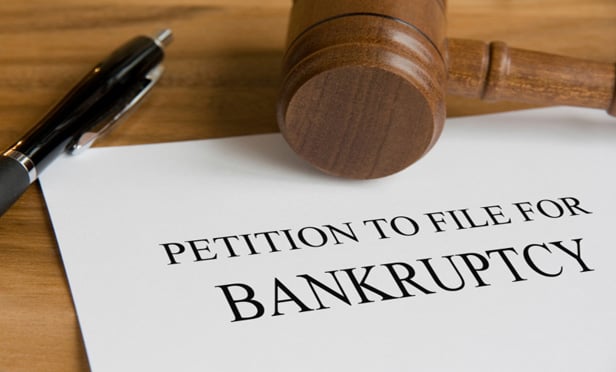Features

Criminal Considerations In Trade Secrets Disputes
Part One of a Three-Part Series When the international theft of U.S. trade secrets escalated and became a higher priority for domestic entities, trade secrets owners faced difficult challenges in collecting evidence, pursuing civil actions against overseas actors, and successfully obtaining worthwhile and meaningful relief from civil actions alone. These challenges ultimately resulted in increased referrals, investigations, and prosecutions of trade secrets theft under the EEA by federal authorities.
Features

Duty of Candor and Good Faith With the USPTO Covers Non-Inventors and Non-Practitioners
Practitioners and non-practitioners that are associated with the examination of patents and patent applications should be vigilant about information that may be material to patentability to avoid having an issued patent be deemed unenforceable.
Features

Supreme Court Set to Hear Transformativeness Fair Use 'Warhol' Case
In the October 2022 Term, the Supreme Court is set to decide whether courts assessing transformativeness under the first fair-use factor of the Copyright Act may consider "the meaning of the accused work where it 'recognizably deriv[es] from' its source material." The case may profoundly affect the fair use analysis, and in turn, the scope of copyright protection for many works.
Columns & Departments

IP News
Federal Circuit: Trade Dress Imitation In the Ninth Circuit
Features

Protecting a Trademark Licensor's Rights In Its Licensee's Bankruptcy Case
A recent bankruptcy case from the District of Delaware underscores the need for a trademark licensor to be alert to filings made in its licensee's bankruptcy case that may require prompt action by the licensor to protect its valuable rights under a license agreement.
Features

IP Rights In the Metaverse
The metaverse, an immersive virtual experience building on the Internet and the physical world, has become a prominent force in branding and marketing for companies struggling to keep up in an ever so globalized economy. Parallel to this digital expansion has been a surge of intellectual property issues.
Features

Filing a Reissue Can Correct Serious Patent Errors
Reissue applications may be quite useful. They may be useful in correcting some type of errors that one would normally think of as "errors" in the strict sense of the word. But they may also be used to correct "errors" in scope of patent protection and may thus be used to increase patent value and should thus be considered as a strategic tool in a patent holder's toolbox.
Columns & Departments

IP News
Federal Circuit Affirms District Court's Decision That an Artificial Intelligence Software System Cannot Be Listed as an Inventor on a Patent Application Federal Circuit Affirms District Court's Partial Award of Attorney's Fees
Features

Federal Circuit Analyzes Specification and Prosecution History Claim Language Usage
University of Massachusetts v. L'Oréal Absent an express disclaimer or special definition of how a term is to be interpreted, it can be frustrating to get a court to reject the plain and ordinary meaning of claim language read in a vacuum, based on the subtleties of how a term is used in a patent or its prosecution history.
Features

One Banana, Two Banana: Can a Banana Taped to a Wall Be Copyright Protected Art?
On July 7, 2022, the Southern District of Florida denied a motion to dismiss in Morford v. Cattelan, which began by posing the following question: "Can a banana taped to a wall be art?"
Need Help?
- Prefer an IP authenticated environment? Request a transition or call 800-756-8993.
- Need other assistance? email Customer Service or call 1-877-256-2472.
MOST POPULAR STORIES
- Yachts, Jets, Horses & Hooch: Specialized Commercial Leasing ModelsDefining commercial real estate asset class is essentially a property explaining how it identifies — not necessarily what its original intention was or what others think it ought to be. This article discusses, from a general issue-spot and contextual analysis perspective, how lawyers ought to think about specialized leasing formats and the regulatory backdrops that may inform what the documentation needs to contain for compliance purposes.Read More ›
- Hyperlinked Documents: The Latest e-Discovery ChallengeAs courts and discovery experts debate whether hyperlinked content should be treated the same as traditional attachments, legal practitioners are grappling with the technical and legal complexities of collecting, analyzing and reviewing these documents in real-world cases.Read More ›
- Identifying Your Practice's DifferentiatorHow to Convey Your Merits In a Way That Earns Trust, Clients and Distinctions Just as no two individuals have the exact same face, no two lawyers practice in their respective fields or serve clients in the exact same way. Think of this as a "Unique Value Proposition." Internal consideration about what you uniquely bring to your clients, colleagues, firm and industry can provide untold benefits for your law practice.Read More ›
- Risks and Ad Fraud Protection In Digital AdvertisingThe ever-evolving digital marketing landscape, coupled with the industry-wide adoption of programmatic advertising, poses a significant threat to the effectiveness and integrity of digital advertising campaigns. This article explores various risks to digital advertising from pixel stuffing and ad stacking to domain spoofing and bots. It will also explore what should be done to ensure ad fraud protection and improve effectiveness.Read More ›
- Turning Business Development Plans Into RealityThis article offers practical insights and best practices to navigate the path from roadmap to rainmaking, ensuring your business development efforts are not just sporadic bursts of activity, but an integrated part of your daily success.Read More ›
